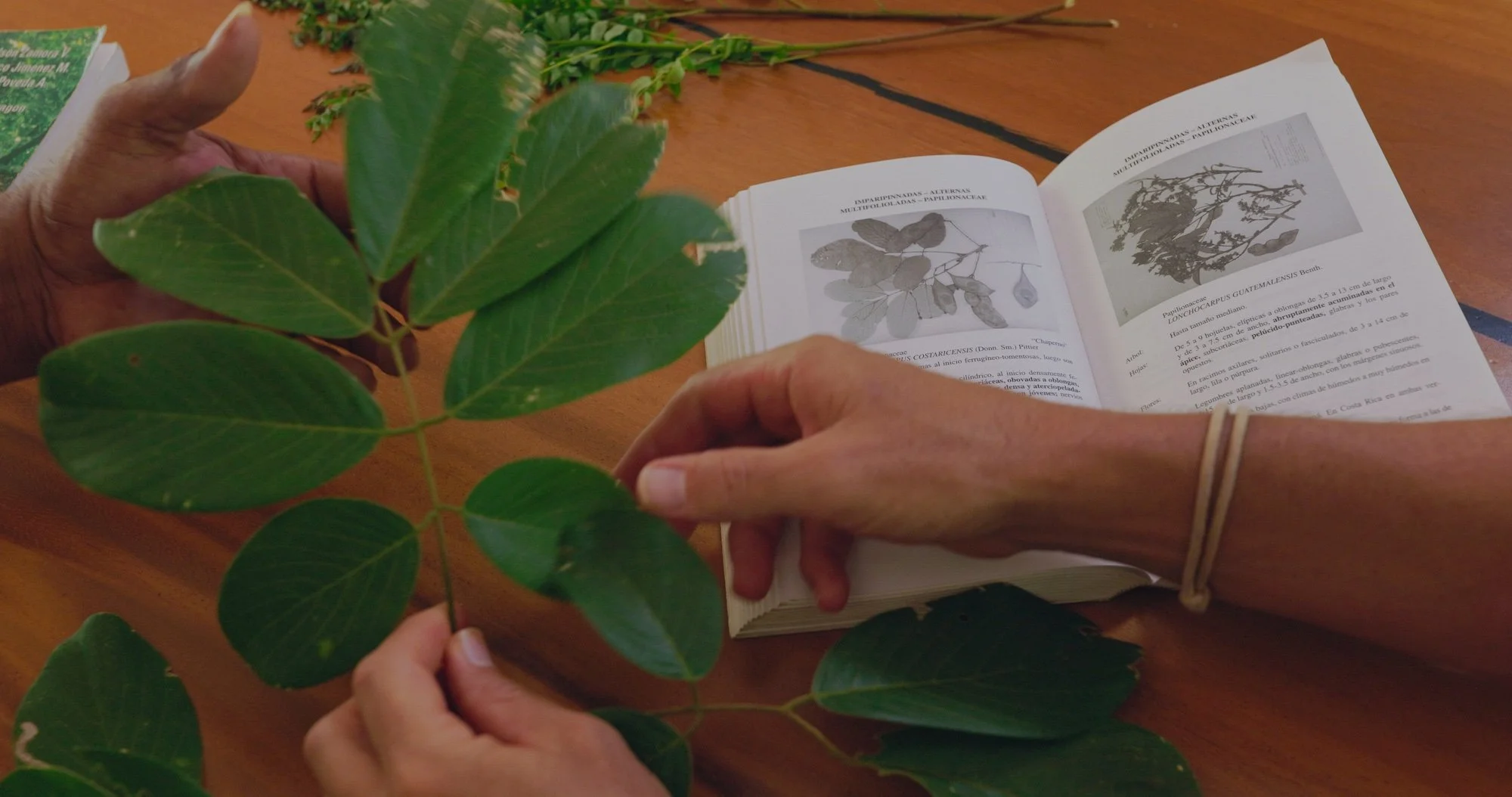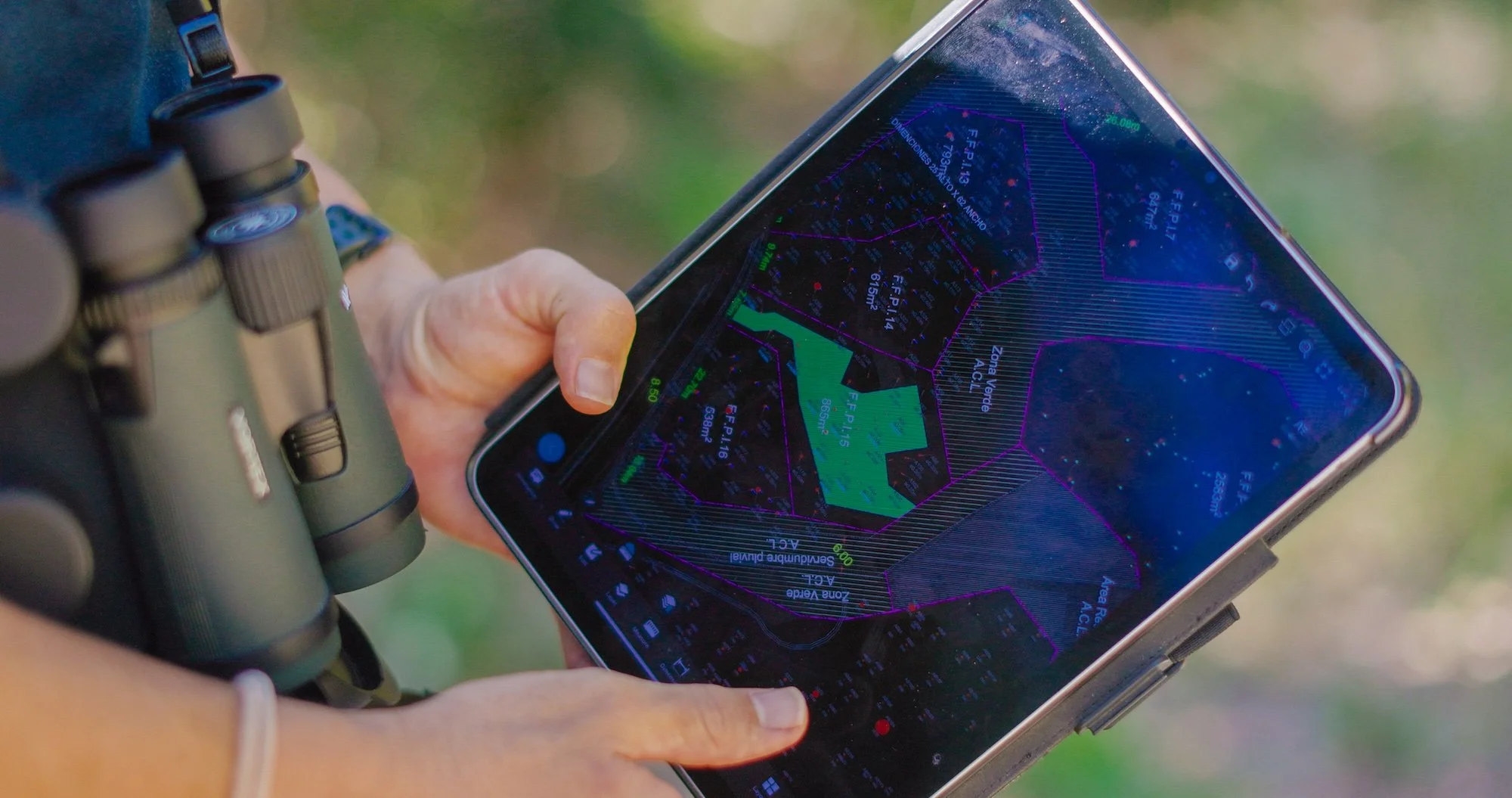Video: Mapping the Trees
Throughout El Bosque, towering mature trees and smaller young trees weave together a vibrant canopy that supports a thriving ecosystem. From the very beginning of this project, we knew that preserving and integrating the trees of the forest into our neighborhood design was essential.
In addition to their natural beauty, trees in El Bosque shelter and feed wildlife, stabilize the soil, and provide natural protection from wind and noise. And they create the foundation for a community that feels truly connected to nature.
Working alongside resident biologist Felipe López and local plant expert Geovanny Moraga, we’ve identified, tagged, and mapped over 1,600 trees across the property. Each tree was carefully assessed, not just for its species but for its ecological role, health, and longevity.
The intensive cataloging process is part of our commitment to prioritize nature when engaging with the site, as outlined in our Conservation Management Plan. This plan establishes clear goals to minimize the impact of construction, regenerate natural areas where possible, and offset any unavoidable changes.
The resulting tree map is now an essential tool, guiding infrastructure placement so that roads, paths, and homes integrate seamlessly with the natural landscape rather than disrupt it.
Architects will use the tree map to position homes in a way that prioritizes preservation—sometimes even incorporating trees into the home designs. If a tree must be removed or pruned, we know how to compensate for the impact in a way that maintains the balance of the ecosystem.
This collaboration between project developer, conservationists, architects, and engineers is special—and has helped us design a community where people and nature can truly connect and coexist.






